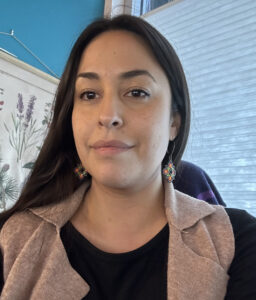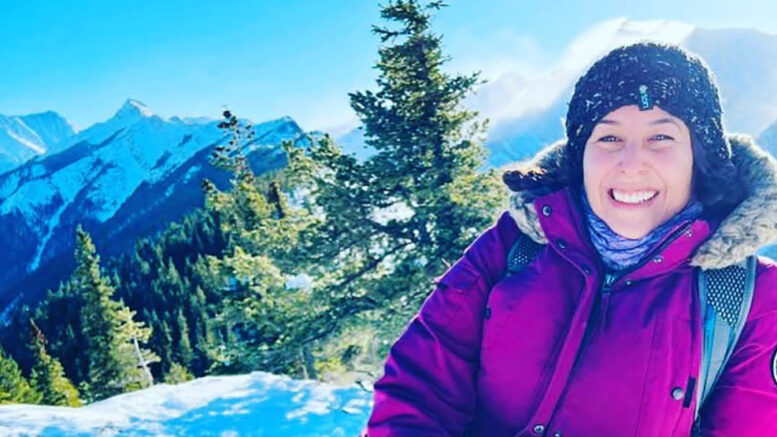By Laura Mushumanski, Local Journalism Initiative Reporter
(ANNews) – Literary Journalist, Stephanie Joe grew up in the Yukon on her traditional territories that connected her to her ancestors, learning and engaging in traditional ways of living that supported families and community. In her youth, she was proud to be Indigenous until she became a teenager, feeling it was “no longer cool to be native, and turned away that part of myself.”

Stephanie Joe.
Then when Joe was attending a creative writing program in Kelowna, British Columbia, she learned that many people, including her English instructor were just starting to learn about the true history of Canada, Indian Residential Schools, how Indigenous peoples were displaced, and how intergenerational transmission of trauma affected Indigenous people—yet for Joe, it was always a part of her life.
As Stephanie shared her own lived experiences and that of her family’s, her instructor wanted to learn more and share this knowledge in a good way with others. This led to Joe researching about what happened and her own reality of “that’s my life” that was hard for her to grapple with—the genocide of Indigenous peoples and the current repercussions of what trauma does to the human body-heart-mind-spirit. In 2014, Stephanie entered a literary journalism program through SAIT and her passion for writing Indigenous stories came a reality.
“My intention was to tell Indigenous and First Nations stories,” she explained.
Reporting on Indigenous events “felt right” for Joe, “I knew I was on the right path, doors kept opening for me, so many opportunities came—this is where I am supposed to be.” For the past 10 years Joe has reported and shared stories relating to Calgary in the media, being published in magazines, as well as writing for keynote speakers. She then ventured into working for an Indigenous public relations company, working with lots of First Nations across Canada.
When it came down to writing, Joe’s process to get into a writing headspace is also one that involves getting into a heart space—pulling from her own heart and place of understanding of “what it was like to have a dad that went to residential schools.” For Stephanie, “writing is almost like a spiritual experience. You need time to spend with spirit, be guided by spirit, you come to a spiritually vulnerable position, you need to learn not to allow anything that is not supposed to be there.” Soon Joe came to an understanding that for her, she “writes to gift stories for community to benefit community.”
Joe started to notice the impact her writing had on Indigenous communities and how important it is for Indigenous writers to write Indigenous stories—the stories that have been misinterpreted and miscommunicated by an outsider looking in.
As Stephanie continued to walk with a deeper understanding embedded in the importance of storytelling and sharing stories in a good way, she realized how often stories and information being shared about Indigenous peoples, especially Missing and Murdered Indigenous Women were dehumanizing the women in the media—the tipping point of how bringing humanness into a story is crucial for supporting underrepresented populations.
These stories alone have and continue to shape the life trajectory of Indigenous peoples, the untold narrative of the beauty and rich cultures of Indigenous peoples’ knowledge as multidimensional ways of knowing, being, doing, and understanding worldwide—and that can only be told through the lens of Indigenous peoples. How these understandings and Ways of Knowing enrich the lives of all our relations with the understanding of humility as one of the fundamental ways of walking in the world. This understanding and way of life to Indigenous peoples is not understood by everyone, where this misinterpretation of Indigenous peoples continues to fail Indigenous peoples within our communities that force them into barely surviving.
“It is important to tell our stories from our lens because of how stories are told,” added Stephanie.
When writing, Joe “feels connected, not alone—I felt like I belong and it was going to be okay… Indigenous people doing stuff made me feel less alone,” yet inside the classroom she had a very lonely academic experience of “often being the only little native girl in the classroom.”
When writing Indigenous stories, the work is never easy because of the emotional, mental, physical and spiritual hardship that comes with any kind of experienced trauma within family systems and communities. And for the Indigenous sharer of stories, “your voice is so important now more than ever—our communities haven’t had the proper representation, we need more storytellers as Indigenous people… be proud, your story is important, and you are the only one that can tell your story… you are very qualified to do that.”



Be the first to comment on "Indigenous journalist Stephanie Joe Brings humanness into story"